
The world is filled with some truly breathtaking ancient architectural wonders. We are all aware of some of these great ancient engineering marvels, like the Great Pyramid of Giza, the Colosseum, Catacombs of Kom el Shoqafa, and the Stonehenge, to name a few. However, there are also quite a few lesser-known architectural beauties from the eastern part of the world that not everyone is familiar with.
Their design language and construction is quite different from what we see in the west. These ancient structures and buildings might not be as well known as some of the other popular ones, but they are no less than beautiful works of art themselves. Here we look at some of the less renowned ancient engineering marvels hidden inside the eastern corners of the world.
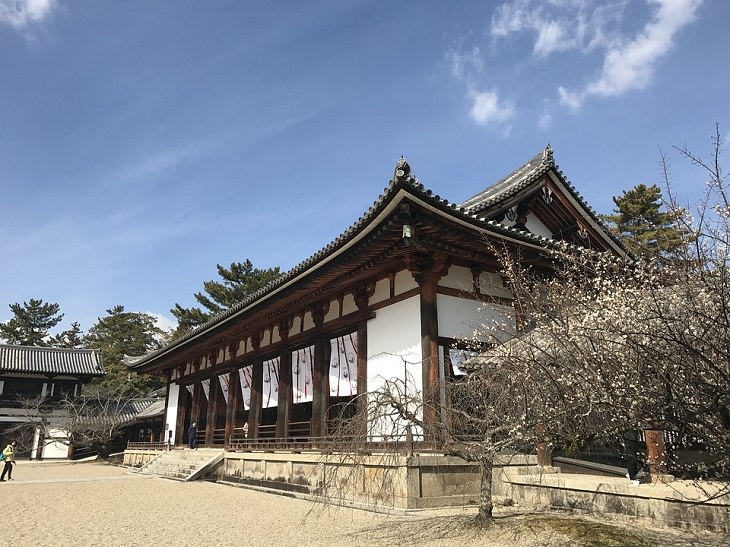
Founded in 607 CE by Prince Shotoku, the Horyuji Temple near Nara, Japan, is the oldest wooden building in the world. The temple complex holds inside it some of Japan’s valuable national treasures. The structure is basically a five-storey pagoda and consists of 48 listed buildings. Numerous precious Buddhist sculptures are stored inside, as well as some of the oldest bronze and wood figures made by Japanese sculptors.
The temple is divided into various segments – the main hall, the pagoda, the treasury, the lecture hall, the bell tower, the central gate, and the hall of dreams. Each section is reminiscent of early East Asian architecture. Double terrace platforms, curvy columns with wooden block plates, along with wooden brackets decorated with cloud design are some of the architectural highlights of the temple.
It is also the only surviving Buddhist monastery from the Asuka Period in its original state and should be treasured for it.
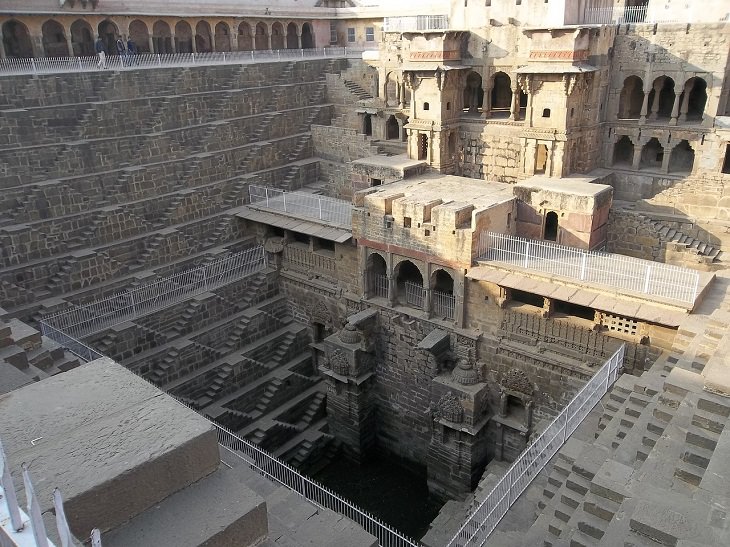
Located in Rajasthan, India, Chand Baori is a hidden wonder that was built over a thousand years ago in a small town. One of the largest step-wells in the world, this place was built by King Chandra of the Nikumbha Dynasty in the late 9th century AD. This unique structure has about 3.500 steps, which are made in a zig-zag fashion, creating an exquisite geometry.
The objective of this structure was three-fold - water-harvesting, a location for the performing arts, and an object of remarkable beauty. The primary motive of Chand Baori, though, was to provide water all year through in the arid region it was located in.
Today, the place has become a tourist attraction and the magical maze captivates people where the play of light often creates mesmerizing structures all through the day.
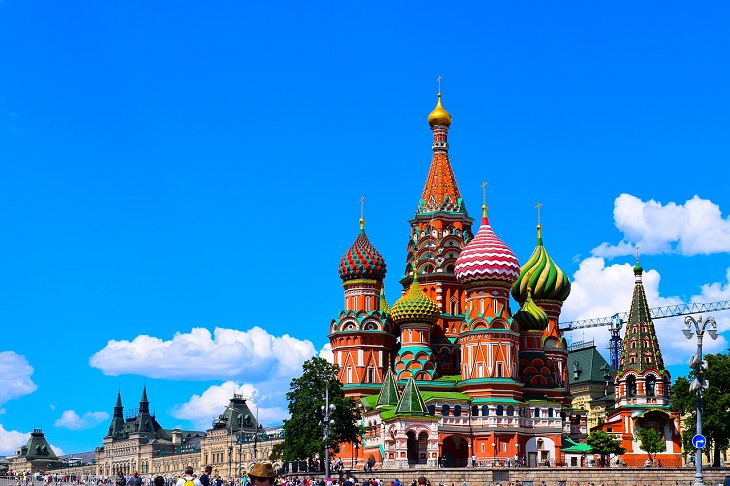
Its colorful exterior makes it look like a magnificent castle from a Disney movie. However, this is St. Basil’s Cathedral – one of the most beautiful landmarks of Russia. Constructed in 16th century Moscow, this church is also called "Pokrovsky Cathedral" or "The Cathedral of Intercession of the Virgin by the Moat." The spectacular monument was built by Ivan the Terrible, the first Tsar of Russia, and work on its construction began in 1554.
The main objective of the cathedral was to honor Ivan’s military victories during his reign. One of the fascinating engineering aspects of St. Basil’s is that it has nine chapels. Interestingly, the basement inside the building was used as a storage unit to safely house the church coffers, as well as the savings of the city’s elite.
Also, the remarkable colors that you see on the cathedral’s façade and domes were only added in the 17th century. Initially, the monument’s color was said to be white.
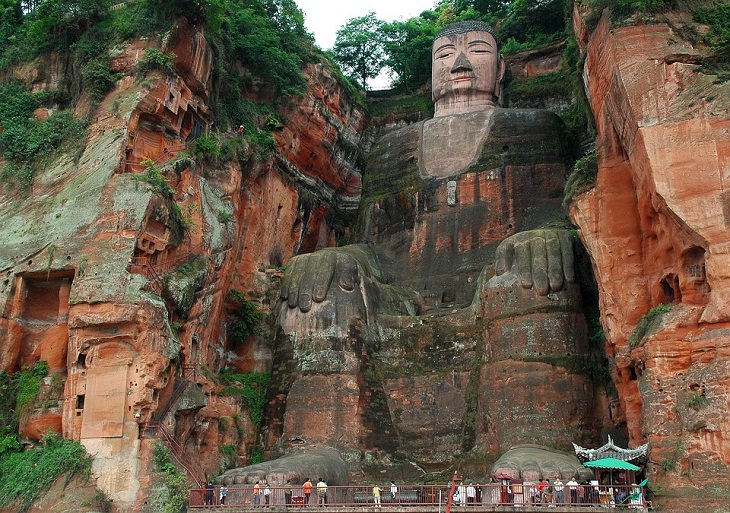
Carved in the 8th century AD, the Leshan Giant Buddha statue is located to the east of Leshan City. Also known as Dafo, this giant structure is located at the junction of three rivers - the Min River, Qingyi River, and Dadu River. The statue is 71 meters (about 233 feet) high and has 8.3-meter-long (about 27 feet) fingers along with a 24-meter-wide (about 79 feet) shoulder. It also has a 9-meter-wide (about 30 feet) instep that can accommodate about 100 people easily.
The Leshan Giant Buddha is not just about its gigantic size, though. For instance, the Buddha’s coiled hair has 1,021 buns in the statue. Then there is the brilliant drainage system that is built with the statue and made up of some intricate hidden gutters and channels. Since the structure was built thousands of years ago, it must have been incredibly difficult for the craftsmen to create all the minute details on such a grand scale. But they have pulled off an engineering marvel that has stood the test of time.

Located in northern Cambodia, Angkor Wat is a massive Buddhist temple complex. The word Angkor Wat translates to "City of Temples" or simply "City Temple". It was originally built in the early 12th century as a Hindu temple by Emperor Suryavarman II. However, it was later transformed into a Buddhist temple in the 14th century. The area of the site is spread over 400 acres and contains a number of precious sculptures and statues.
Today, Angkor Wat is a UNESCO World Heritage Site, and the temple is said to be the largest religious monument in the world. The central tower is 213 feet (65 meters) tall and surrounded by four smaller towers along with a series of enclosure walls. While it is no longer an active temple and has suffered during the autocratic rule of the Khmer Rouge dynasty in the 1970s, Angkor Wat still serves as a significant tourist attraction.

Borobudur is the largest Buddhist temple in the world and dates way back to the 9th-century. The magnificent temple complex is located on the island of Java and was built during the rule of the Sailendra Dynasty. The temple is adorned with beautiful stone carvings representing images from the life of Buddha.
You would be surprised to know that no cement or mortar was used in the construction of this temple. Instead, the craftsmen shaped the stones in a pattern that the structures interlock with each other in a definite order. The temple has survived several natural disasters and was left abandoned for years before it was rediscovered in the 1800s.
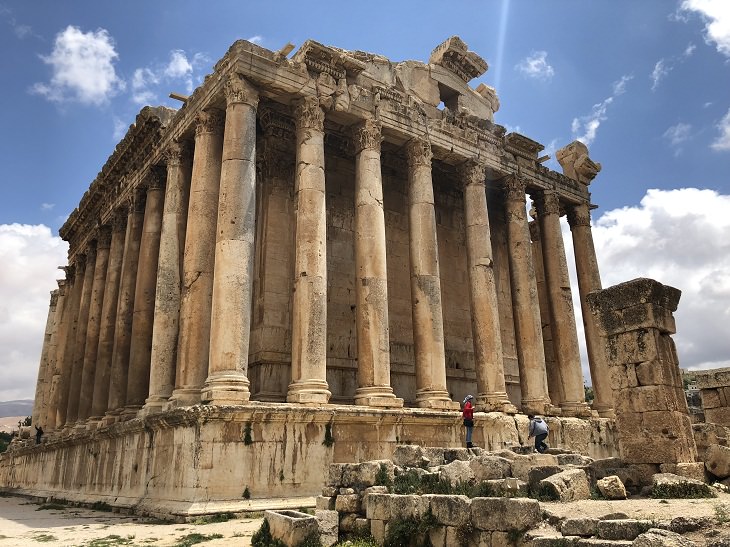
Image Source: Wikimedia Commons
Known as one of the best-preserved Roman temples in the world, the Temple of Bacchus is located in modern-day Lebanon. The temple is dedicated to the Roman god of wine Bacchus, also known as Dionysus. This unique and architecturally magnificent structure is said to be constructed between 150 and 250 AD. It is not known who the architect of this place is, but the construction was commissioned by Roman Emperor Antoninus Pius around 150 AD.
The site is incredibly well preserved and you can still find the carvings of lions, bulls, eagles, among other figures, and scriptures that indicate rituals and practices of that era. The main entrance is bedecked with grapes and vines along with different versions of the image of Bacchus. One of the hallmarks of this temple is the 42 Corinthian columns, which truly look like a glorious work of art.
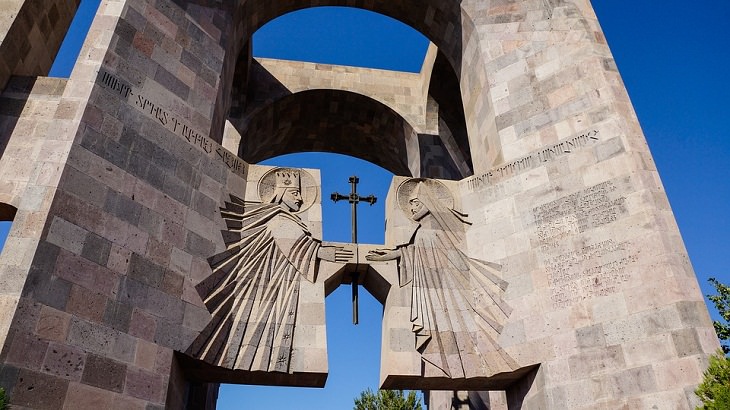
Believed to be the oldest cathedral in the world, the Etchmiadzin Cathedral is situated in the city of Etchmiadz in present-day Armenia. The structure was built between 301 and 303 AD by Said Gregory, the illuminator, and is made of stone. The beautiful domes only add to its splendor.
The cathedral is 33 m (108 ft) long and 30 m (98 ft) wide. It has seen several renovations and redecorations over the past centuries, but its façade still has a vibrant blend of Armenian architecture and artistic styles. The reliefs on the northern wall of the cathedral attract tourists the most, as it has the depictions of Saint Paul the Apostle and Saint Thecla. Other notable art forms inside the church include some lovely frescoes while the elegant belfry and sacristy only enhance its glory.
Related Articles:
These Are the 7 Oldest Cities on Earth that Still Stand
7 Digital Recreations of Ancient Ruins